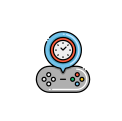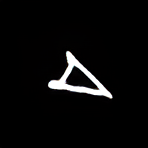GrappleHat
- 22 Posts
- 202 Comments

 6·10 days ago
6·10 days agoI’ll go a little against the grain here. I think that LLM chatbots will definitely find application helping lonely people, and some people will develop a real connection to the bot. A relationship with a bot might be similar to one with a human, but it will never be identical. So it won’t replace human connections, but that doesn’t mean it wont have significant utility and be meaningful to people.
A coworker recently sent me a Word document with edits and comments they had added. When I downloaded & opened it (in Word on Windows!) it told me that it had the edits/comments but it wouldn’t let me see them unless I log in to my Microsoft account and then view it online in the web version of Word. What the actual fuck?
Fuck that. I responded to my coworker and asked them to just send me the edits via email in plain text. I’m not winning popularity contests at work, but what the fuck Microsoft?

 1·18 days ago
1·18 days agodeleted by creator

 2·19 days ago
2·19 days agoAdnausium sounds really cool! How similar is it to uBlock in practice? (I don’t want to lose the great performance of uBlock)
If you’re nervous about the switch consider dual-booting. Then you’re not fully committed to the switch & you can have your old Windows system back whenever you want it.
Main steps are:
- Run a defrag on your Windows machine to physically consolidate all your Windows data to one area.
- Break that partition into two (Linux will go one the new empty side)
- Install Linux from a USB as normal, but don’t choose to wipe your drive completely. Choose a manual option instead where you specifically indicate your intended Linux partition from above.
- Optional: Once installation is complete you can set up another partition to hold files which can be available to both OSs.
- Boot into Linux & define the remaining unused space in the Linux partition as a new NTFS partition & give it a name which makes it obvious what it is (i.e. “sharedspace”)
- Then boot into Windows and move the existing data you’d like to share between OSs here (work documents, movies, music, etc.)
Some useful links:
- Video on setting up a dual boot
- Howtogeek used to have a great walkthrough for doing this but I’m getting a 404 error when I try to follow the link now :(
- Optional: Setting up Linux symlinks to point to the shared space partition

 3·26 days ago
3·26 days agoI much preferred their old CLI app over the GUI. Hoping they bring it back.

 2·1 month ago
2·1 month agoWhat’s a “gang input”?

 3·1 month ago
3·1 month agoI saw numbers on this recently. It was something like 80-90% of all antibiotics are given to livestock. So this is a huge contributor.

 4·1 month ago
4·1 month agoLol!!! Yes!!!

 102·1 month ago
102·1 month agoTrying to prevent bacteria from developing antimicrobial resistance. At these rates in 30 years antimicrobial resistant bacteria are projected to kill more people than cancer.
Do you have any network drives mounted? I’ve had experiences where a program fails to save or download and sometimes hangs if (1) I save to a mounted network drive, (2) I lose the mount for whatever reason, and (3) I try to download or save again and the program presumably attempts to access the last place it wrote to (the lost network mount).

 2·2 months ago
2·2 months agoYes! I think it’s a good idea.

 4·2 months ago
4·2 months agoOh, you’re right. After further investigation: this old program is 32-bit but my Wine prefix was 64-bit (face palm). Switching my prefix architecture fixed this issue (& of course exposed a new one… This Wine stuff is hard if you’re not just trying to run video games…)

 56·2 months ago
56·2 months agoWhen you grow up everything you write will need to be in cursive.

 14·2 months ago
14·2 months agoYou’re being a wet blanket.

 9·2 months ago
9·2 months agoThe Empire Strikes Back

 2·2 months ago
2·2 months agoCould switching your user agent help? Try setting yourself to Windows+Chrome.
What’s Google?

 24·2 months ago
24·2 months agoI’m very skeptical that this “model poisoning” approach will work in practice. To pull it off would require a very high level of coordination among disparate people generating the training data (the images/text). I just can’t imagine it happening. Add to that: big tech has A LOT of resources to play this cat & mouse game.
I hope I’m wrong, but I predict big tech wins here.















A couple of ideas:
Encoding holograms
Decoding holograms:
Last thought
Holography is often used to record information from the real world, and in that process it’s impossible to record the light’s phase during the encode step. Physicist’s call it “the phase problem” and there are all kinds of fancy tricks to try to get around it when decoding holograms in the computer. If you’re simulating everything from scratch then you have the luxury of recording the phase as well as the amplitude - and this should make decoding much easier as a result!